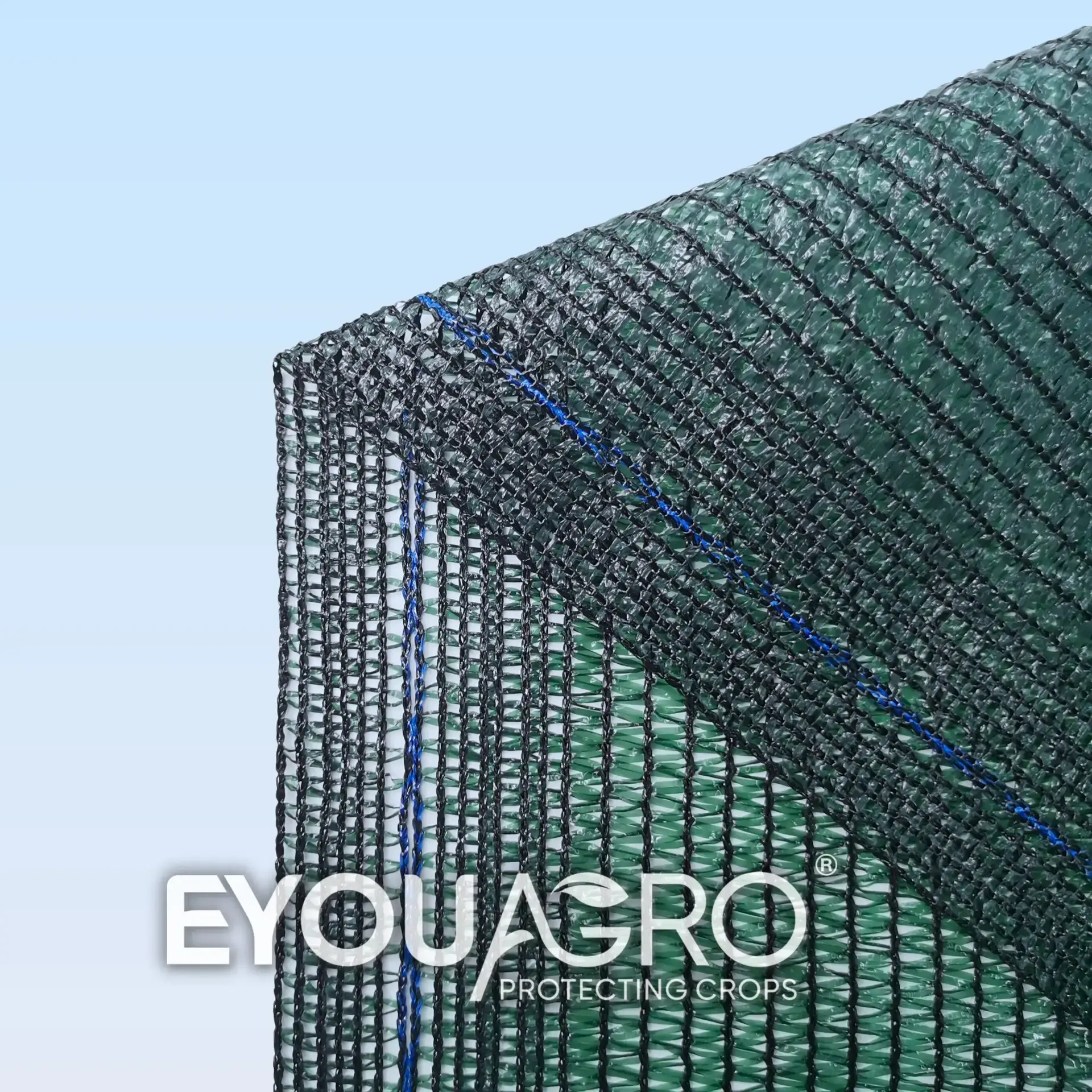Description
Greenhouse Shade Screen (greenhouse shade cloth, greenhouse shade ) is used to provide shade against sunlight and to control the temperature.
It can also be used to protect flowers, and trees against frost, wind, and hail damage. It can also be used for temporary fencing, packaging applications, and greenhouse covering.
Greenhouse shade cover is used to lessen the effects of light during the summer.
Greenhouse screening fabric has shading capabilities ranging between 30% and 80%,
making it possible to adapt the system to crop requirements.
They can be put to a variety of uses in tunnels and horticultural greenhouses, and outdoors under the framework.
Features:
- Optimal Sunlight Filtration: Ensures plants receive the right amount of sunlight.
- Temperature Regulation: Maintains the perfect temperature for plant growth.
- UV-Protected: Shields plants from harmful UV rays, preventing sunburn.
- High-Strength Material: Made from durable high-density polypropylene, ensuring longevity.
- Versatile Use: Perfect for greenhouses, tunnels, and outdoor frameworks.
EyouAgro Greenhouse Shade Cloths are a translucent shade cover for your greenhouse.
It is made from high-strength materials that produce a perfect diffuse light diffusion and helps to keep the warmth within your greenhouse.
Its easy installation allows you to set it up within minutes and block off more than 98% of harmful UV rays, keeping home gardens growing at all times.
It prevents temperatures from rising inside the greenhouse when the weather is hot, whilst reducing temperature inside when the sun goes down.
Available Types:
Specifications:
| Product No. | Weight[g/m2] | Shading | Size[m] | UV Warranty | Ideal for |
| Light 40% | 110 | 40% | 4.3 x100m ; 5.3x100m | 8 Years | Greenhouse |
| Medium 60% | 145 | 60% | 4.3 x100m ; 5.3x100m | 8 Years | Flower Market |
| Heavy 80% | 160 | 80% | 4.3 x100m ; 5.3x100m | 8 Years | Livestocks |
Something You like to Know
- Shade Cloth Clips
- 12 Tips on Shade Cloth
- How to Select Shade Cloth
- 7 Tips on Best Shade Cloth for You
- Aluminet Shade Cloth
- Woven Shade Cloth
- Monofilament Shade Cloth
Applications:
- Greenhouses: Provides optimal light diffusion for plants, ensuring healthy growth.
- Outdoor Gardens: Shields plants from excessive sunlight, especially during peak hours.
- Nurseries: Ensures young plants get the right amount of light without getting scorched.
- Patio Covers: Offers shade for outdoor sitting areas, making them more comfortable.
- Temporary Fencing: Can be used as a barrier or divider in gardens or farms.
FAQs:
- How does the Greenhouse Shade Cloth filter UV rays?
- EyouAgro’s Greenhouse Shade Cloth is designed with materials that absorb and reflect harmful UV rays, ensuring plants receive only the beneficial spectrum of sunlight, which promotes healthy growth without the risk of UV damage.
- What percentage of sunlight does the shade cloth block out?
- Our standard Greenhouse Shade Cloth is designed to block out approximately 30-70% of sunlight, providing an optimal balance for plant growth. However, we offer variations to cater to specific plant needs.
- How does the shade cloth contribute to moisture retention in the greenhouse?
- The shade cloth reduces evaporation rates by moderating temperatures and shielding plants from direct sunlight. This helps maintain a more consistent humidity level, beneficial for many plants.
- Can the Greenhouse Shade Cloth be used in conjunction with other greenhouse climate control systems?
- Absolutely. Our shade cloth complements other climate control systems, such as ventilation and heating systems, ensuring a holistic approach to creating the perfect environment for plant growth.
- How do I determine the right shade percentage for my specific crops?
- Different plants have varied light requirements. It’s essential to research your specific crops or consult with an agricultural expert. EyouAgro also provides guidance on selecting the appropriate shade percentage based on your cultivation needs.
· Greenhouse Shade Cloth Recommendations ·
| Density | Name of Plants |
| 30% | Roses, Strawberries, Gooseberries, Tomatoes, Cucumber |
| 40% | Bedding Plants, Gloxinias, Herbs, Iris, Lilies, Vegetables |
| 50% | Foliage plants, Cut greens, Orchids, Ginger, Pot plants |
| 60% | Orchids ( Oncidiums, Phalaenopsis ), Lettuces |
| 70% | Ferns, Orchids ( Cypripediums), Philodendron,Succulents |
| 80% | Indoor plants, Certain Orchids, Plantation crops, Tea, Coffee, Cardamom |
| 90% | Cattle shed, Poultry houses, Construction Scaffolding, and vehicular shades |






